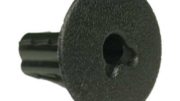It’s 2019. You have the entire world’s knowledge in your pocket. There are millions of videos available on demand, thousands of channels of TV that you can record and watch on your time. You can turn on the lights by asking the question out loud, and find out the weather halfway across the world just as easily. We live in the future, right?
So what’s the deal with antennas?
Yes you can get some very modern looking antennas. You can also get some of those big metal jobs that sit on the roof that looks like your grandfather put it up when he was a kid. In a world where everything looks like it was invented by NASA, why put up a TV antenna that looks like it comes out of a 1940s issue of Popular Mechanics?
This may come as a surprise to you but antennas are just as important today as they ever were. Television antennas have evolved, and while you certainly still can use the old-school yagi type, it’s much more common to use a sleek, white-clad tower that’s less obtrusive and works within common HOA rules.
Antennas can look the same because the laws of physics haven’t changed in the last 50 years. Sure, phones may seem like magic slivers of black glass now, but they still work according to the laws of physics. We have a better understanding of physics than we did in 1940, but physics itself hasn’t changed. And that, my friend, is why antennas are anything but obsolete.
Antennas are anything but obsolete
Believe it or not, your right to free television is guaranteed by the government. Don’t worry, it’s not a socialist conspiracy. Television broadcasting takes place on public airwaves. According to federal law, the airwaves are akin to a national park, and everything done on them must serve the public. In some cases that means providing secure communication for first responders or frequencies that allow for cellular communication. In the case of the VHF and UHF bands, that means free TV.
That’s right, the rule currently in place says that if there’s a broadcast between 54MHz and 607MHz (with a few breaks in between) you must be able to connect an antenna to a TV and receive it without paying a fee. That’s the law, folks, that’s your right.
And in order to exercise that right, you need a TV antenna.
Things don’t need to be fancy in order to work
The basic principle of an antenna hasn’t changed since it was discovered in the 19th century. Electricity traveling through the air, even in very small amounts, can be received by putting up a conductive piece of metal that’s just the right length. The molecules in the metal vibrate in a way that’s very consistent with the way the electricity is sent through the air. I’m simplifying but that’s all there is to it.
If you’re close enough to the TV towers – usually within about 10 miles – you can just put up a small antenna and get a lot of programming. Beyond that you may need a larger antenna or some fancy electronics to get enough resonance from that piece of metal in order to make it work.
Will antennas ever become obsolete?
Of course anything is possible. Broadcasters continue to get greedier and greedier. They’ve started blacking out their own channels rather than agreeing to reasonable carriage fees. If that doesn’t stop, then TV antennas may eventually disappear. Every technology has a beginning and an end. A generation ago it was inconceivable that landline phones or newspapers would disappear. Today both are barely surviving relics of an earlier age. The same could happen to TV antennas, but… certainly not today.
Today’s antennas are a critical part of making sure you have access to local broadcasting. Maybe there will be a time when you can stream live local broadcasts for free on your phone. At that point maybe antennas won’t be as important. But that’s a long way off.
In the meantime, get a personalized recommendation for the perfect antenna for you, only at Solid Signal.





